Creative Gardening Ideas for Small Apartments
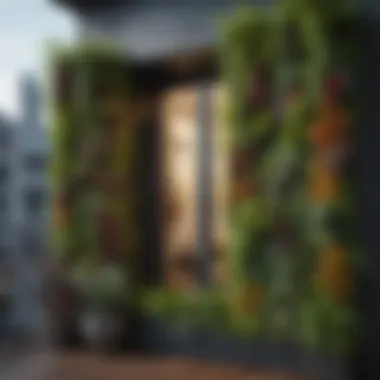
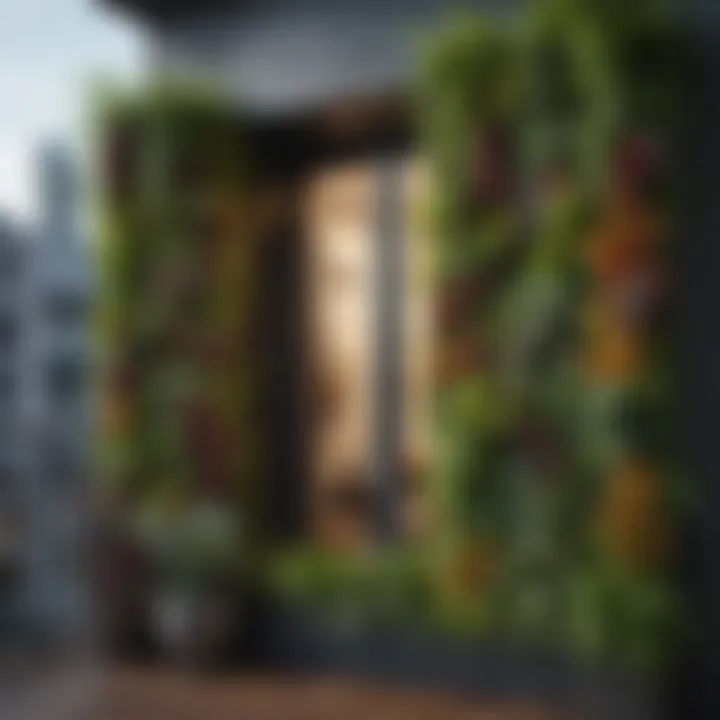
Intro
Many who reside in apartments often think their gardening dreams are out of reach. However, far from it, with clever strategies and a little creativity, anyone can cultivate diverse green spaces right where they live. Whether you're in a cozy studio or a larger two-bedroom, apartment gardening is a trend that is not just practical but also elevates your living environment immensely. In this guide, we explore innovative ideas tailored for urban dwellers wrestling with limited space and challenging light conditions. Our journey through unique concepts like vertical gardens and edible plant displays will showcase how to transform any nook into a flourishing sanctuary.
Feature Spotlight
Exceptional Architectural Designs
When discussing innovative gardening in apartments, one cannot overlook the role of unique architectural designs that lend themselves brilliantly to greenery. Imagine floor-to-ceiling windows allowing sun to spill into your space, inviting you to introduce an array of plants eager for that glorious light. Integrating planters within architectural features—such as window sills, railings, or even ledges—can help maximize every inch of your home, transforming mundane corners into thriving ecosystems.
For example, a stylish floor planter can become a statement piece; think of it as a piece of art that breathes life into your room. Planning these designs thoughtfully not only enhances aesthetics but promotes air quality and emotional wellbeing, attributes that can't be overstated in urban settings.
Unique Decor Elements
In the world of apartment gardening, decor elements intertwine with design—a delicate dance that influences how we experience our domestic environments. Utilizing decorative pots can add character, particularly when chosen to complement your interior style. Opt for terracotta for a rustic feel or sleek ceramic for a modern touch; each choice can reflect personal taste while harmonizing with other decor elements.
Don't overlook hanging planters suspended from ceilings or walls—these not only save space but serve as eye-catching decor that draws the gaze and conversation alike. Incorporating plants with vivid blooms or attractive foliage can lend depth and color to your interiors, effectively transforming a bland wall into a vibrant showcase of life and design. Sharing some indoor plants like pothos or spider plants can even create a charming, lush atmosphere that feels inviting and warm.
"Gardening in an apartment requires a blend of creativity and adaptability, turning limitations into opportunities."
Location Highlights
Must-Visit Neighborhoods
While this article is centered on innovative gardening within indoor spaces, one cannot ignore the influence of surrounding neighborhoods on our gardening endeavors. Living close to local parks or community gardens can inspire those with limited indoor space. Exploring your nearby environment can unveil places where residents share their gardening knowledge, perhaps through classes or community farming initiatives. Locations such as Brooklyn's Prospect Park not only offer beautiful landscapes but can provide plants or seeds that you can attempt to replicate in your apartment.
Cultural and Historical Significance
Gardening has deep cultural roots across many societies. Understanding how different communities approach gardening can enrich one’s personal gardening strategy. Learning about the native plants from the area where you live can be quite illuminating. For instance, if you enjoy a Mediterranean climate, incorporating herbs like rosemary or lavender can connect your indoor gardening experience to broader cultural practices. This melding of tools, techniques, and traditions fosters a greater appreciation for gardening as not only practical but also profoundly historical.
Understanding the Apartment Gardening Landscape
When it comes to gardening in an apartment, it’s like fitting a square peg into a round hole; it might seem tricky, but with the right approach, it can work beautifully. Apartment living brings its own set of challenges, particularly space limitations and lack of natural light. However, understanding these nuances can turn any indoor area into a green sanctuary.
One of the main advantages of urban gardening is the sheer variety of options available today. Whether it's a tiny balcony or a cozy windowsill, there’s potential in every nook and cranny. The popularity of this trend is surging, as city dwellers seek ways to reconnect with nature amidst the concrete jungle. Many folks are realizing that they can enjoy the fruits, herbs, or flowers they cultivate themselves. More than just a hobby, it's a lifestyle shift that brings both satisfaction and serenity.
The Rise of Urban Gardening
Urban gardening has exploded as more people crave a touch of nature in their daily lives. The catalyst for this shift could be attributed to many factors, including urbanization, increased environmental awareness, and the pandemic's influence on people reevaluating their priorities.
Young professionals are increasingly opting for fresh produce grown right on their balconies. Whether they’re planting tomatoes in repurposed containers or cultivating herbs in their kitchens, apartment gardening is more than a trend; it’s becoming a movement. The general buzz around fresh foods, along with the urge to go organic, makes growing your own plants an attractive path.
Benefits of Gardening in Small Spaces
Gardening in tight spaces offers a cornucopia of benefits that can enhance one’s quality of life.
Mental Health Benefits
Engaging in gardening can do wonders for mental health. It’s a therapeutic activity that promotes mindfulness, allowing individuals to focus solely on the task at hand, which can help alleviate anxiety. The act of nurturing plants often translates to nurturing oneself, fostering a sense of accomplishment. Moreover, just being around green plants has been shown to decrease stress and boost one’s mood. Gardening can provide a much-needed escape from the fast-paced city life.
Aesthetic Enhancement
The visual appeal of plants is another perk not to be overlooked. A well-placed pot or a cascading vine can elevate the ambiance of any room. By adding greenery, one can soften sharp architectural lines and create a welcoming atmosphere. Plants can serve as natural art pieces, providing pops of color and a touch of life that turns an otherwise mundane space into a vibrant haven. It’s all about elevating the everyday experience.
Environmental Impact
On the environmental front, apartment gardening contributes positively in many ways. Firstly, it helps purify the air by absorbing carbon dioxide and releasing oxygen, which is especially crucial in urban settings. Moreover, growing plants at home can significantly reduce the carbon footprint associated with commercially grown produce, which undergoes transportation and packaging. Additionally, apartment gardeners often practice sustainable habits, such as composting organic waste, which encourages a circular economy right within their homes.
"A garden is not just a place to grow plants; it’s a way to cultivate a more mindful, healthier lifestyle."
By leveraging the potential within the compact space of an apartment, individuals can tap into a rewarding and enriching gardening experience. This foundational understanding of urban gardening paves the way for even more innovative ideas that will be explored throughout this article.
Selecting Suitable Plants for Apartments
Choosing the right plants for apartment living is an essential aspect of creating a thriving indoor garden. Living in compact spaces comes with its own set of challenges, particularly when it comes to finding plants that can flourish under less-than-ideal conditions. Not only must plants adapt to limited light and space, but they also need to bring both aesthetic appeal and functional benefits into our homes. Selecting suitable plants enhances the ambiance and can significantly improve air quality while fostering a sense of well-being.
Houseplants for Low Light
Plants that tolerate low light are invaluable for apartment dwellers. Many people's homes come with limited sunlight, especially if they reside in busy urban areas or have north-facing windows. These plants are ready to step up to the plate!
Snake plant
The Snake plant, also known as Sansevieria, is a sturdy choice that thrives even in dim light. One of its most notable features is its airy, upright leaves, which can grow impressively tall. This plant is exceptional for its air-purifying abilities, making it a beneficial option in apartments. The interesting thing about the Snake plant is that it releases oxygen at night—not something many plants do—which means while you sleep, the air stays fresh.
However, its beauty comes with a warning: the Snake plant is toxic if consumed. Therefore, it may not be suitable if you have pets or small children roaming around.
Pothos
Another great contender is the Pothos, which many people swear by for their easy-care nature. With its trailing vines and heart-shaped leaves, Pothos adds a lovely visual touch to any space. You can let it hang from shelves or train it up a trellis, giving your room that touch of lushness.
Pothos does wonders in low light, but it's also forgiving if you forget to water it now and then. While an advantage, overwatering can lead to root rot, so it’s essential to be cautious. It’s also worth noting that Pothos can be mildly toxic, so from safety perspective, keep it away from pets.
ZZ plant
The ZZ plant, or Zamioculcas zamiifolia, is the dark horse of indoor gardening—it thrives on neglect. Resilient and tough, it requires very little light and is drought-resistant, making it ideal for busy city dwellers who might forget to water it on occasion. The ZZ plant features glossy, dark green leaves that can create a striking contrast against lighter decor.
While its low maintenance requirement is a blessing, there's a flip side: the ZZ plant is somewhat sensitive to overexposure to light. So, placing it in direct sunlight might not be the best idea. Additionally, it is mildly toxic if ingested, so caution around kiddos and pets is prudent.
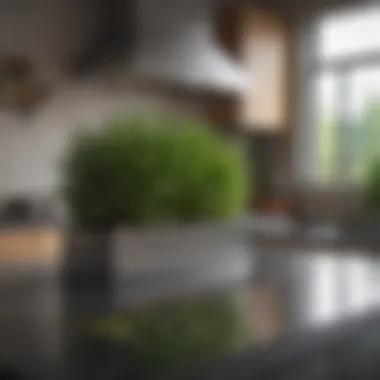
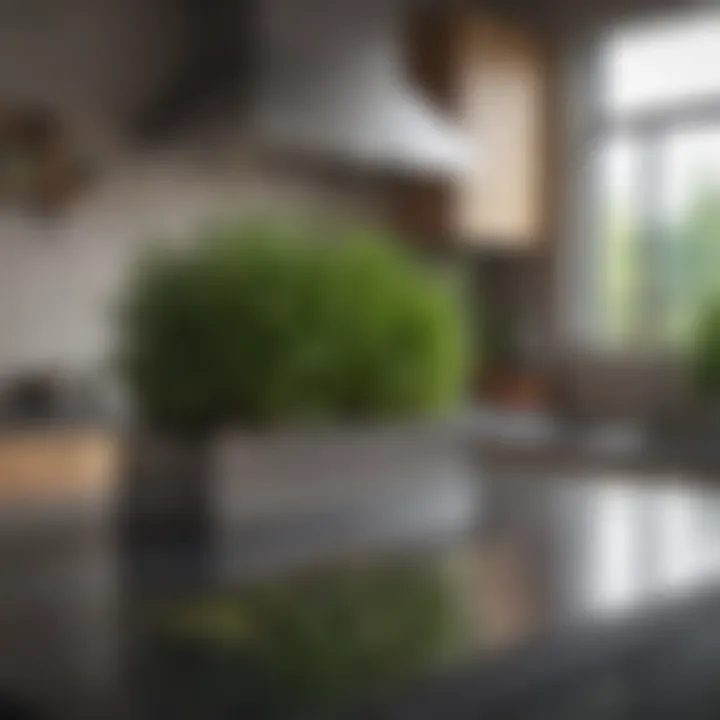
Air-Purifying Plants
Apart from aesthetics, air-purifying plants serve an essential function in residential spaces. They filter out toxins from the air, making it cleaner and healthier to breathe.
Spider plant
A popular choice, the Spider plant, is adept at improving indoor air quality. Its arching green-and-white striped leaves create a lively display, and it produces baby plants known as “pups” that can be easily propagated. Spider plants are resilient and tolerates varying light conditions, making them ideal for apartments.
They can absorb pollutants like formaldehyde and xylene, which is a plus for apartment dwellers looking to improve their air. However, while they can handle some neglect, they do prefer slightly moist soil, so keeping an eye on watering is necessary.
Peace lily
If you’re after a classic beauty, consider adding a Peace lily to your space. Its elegant white blooms are a soft touch to any environment, and it’s known for its air-purifying qualities. This plant can thrive in low light and only needs watering when the soil feels dry.
However, it's important to note that Peace lilies are toxic to pets, and while beautiful, the sap can cause irritation. Choose your placement wisely for both the sake of your pet and the plant.
Bamboo palm
Bamboo palms make an excellent addition to indoor gardens. Its feathery fronds create a tropical vibe, quite the major transformation for apartments. They are particularly good at filtering indoor air contaminants, making them a powerful ally in boosting air quality.
What's special about bamboo palms is their ability to grow in indirect light, placing them in corners where other plants might not survive. On the downside, they need regular feeding with fertilizer during the growing season to thrive fully, which can be an extra chore for those who don’t have a green thumb.
Herbs for Culinary Use
Growing herbs at home is a delightful way to add flavor to your cooking while also having a plethora of greens at your fingertips. They can double as decorative elements, brightening up your kitchen.
Basil
Basil is a kitchen staple and grows wonderfully in pots. This aromatic herb prefers warm weather and bright light, but it can also adapt to indoor conditions with a bit of care. When you pinch off the tops, it encourages bushier growth, which can be visually appealing.
Plus, fresh basil can elevate simple dishes, giving you a culinary boost right at home. One downside is it does require regular watering and consistent sunlight, which can be challenging for busy urban life.
Mint
Mint is quite versatile and grows well in most conditions, making it another wonder for apartment gardeners. The fact that it spreads rapidly means you might want to confine it to a pot to prevent the rest of your plants from fighting for space. Its fragrant leaves can be used in a variety of dishes, cocktails, and teas, adding freshness to your palate.
That said, mint can be a bit of a diva and prefers to be kept consistently moist and out of direct sunlight for longer periods.
Thyme
Thyme is a robust herb that doesn’t just serve a culinary purpose but also brings a lovely aroma to your indoor garden. It's a low-maintenance herb that does well in smaller containers, perfect for counter-tops and window sills. Thyme can withstand a bit of neglect as it prefers drier soils, reducing the anxiety of constant watering.
Keep in mind that while thyme is relatively resilient, it grows best in bright light. Lacking sufficient sunlight can lead to leggy growth and less flavorful leaves.
In selecting suitable plants for apartments, it's crucial to consider the unique environmental factors that will impact plant growth, such as sunlight, humidity, and temperature. This understanding enhances your gardening experience and helps ensure that your plants not only survive but thrive in your apartment.
Maximizing Space with Vertical Gardening
Gardening in apartments can often feel like trying to fit a square peg in a round hole, especially when it comes to limited space and light. Vertical gardening emerges as a powerhouse solution, turning walls and balconies into vibrant green canvases. This method cleverly utilizes upward growth, enabling apartment dwellers to cultivate plants without the sprawling gardens of traditional outdoor settings. By integrating vertical gardening into their living spaces, residents can achieve lush greenery while maximizing available room.
There’s much to be said for the benefits of vertical greenery. Aside from saving floor space, vertical gardens can improve air quality, add aesthetic charm, and even insulate your home. These gardens can be tailored to fit a plethora of available sunlight and can house a wide array of plants, from showy flowers to hearty vegetables. Through creative design, they provide a unique approach to making a home feel more alive.
Benefits of Vertical Greenery
Vertical gardening isn't just about saving space. It brings a cornucopia of benefits that can enhance urban living. Here are some highlights:
- Space efficiency: Climbing or cascading plants take advantage of vertical space rather than horizontal swathes. This is ideal in tight apartment layouts.
- Enhanced air quality: Plants not only beautify spaces, they also purify the air. More greens mean cleaner air, which is a bonus in urban areas where pollution is common.
- Improved insulation: Vertical gardens can act as natural insulators, reducing the need for excessive heating or cooling costs, ultimately making your home more energy-efficient.
- Visual appeal: Whether you’re looking at it from your balcony or visiting a neighbor, vertical gardens catch the eye and can be a stunning focal point in any living space.
DIY Vertical Garden Projects
When it comes to creating a vertical garden, get ready to roll up those sleeves. Here are some creative DIY projects that anyone can tackle:
Pallet Gardens
Using old pallets is one of the simplest ways to construct a vertical garden. Pallet gardens are not just inexpensive; they also add rustic charm to any space. By repurposing a pallet into a hanging garden, one can create a versatile planter that can grow flowers, herbs, or succulents. The key characteristic here is that pallets allow for easy organization of plants, and they can be positioned against a wall or hung up.
However, it’s worth noting that the wood needs to be treated properly so it doesn’t leach into the soil. If done right, pallet gardens can be a thriving green space. Just ensure proper drainage; a few slats can be knocked out to facilitate this, preventing water from pooling.
Hanging Planters
Hanging planters take another route, providing a more modern look while still making the most of vertical space. They can be suspended from ceilings or walls, using a variety of materials like ceramic pots or metal baskets. Not only do hanging planters draw the eye upwards, but they also offer a unique way to arrange plants in a cascading fashion.
This approach gives you creativity in configurations – mix and match plant types or colors to match your decor! One consideration is ensuring the mounts are secure enough to handle the weight when watered. The versatility of hanging planters makes them a popular choice for those wanting to add an artistic touch to their greens.
Wall-Mounted Containers
Wall-mounted containers come in various designs, which can spruce up any dull wall. These containers can host a range of plants from trailing beauties to vibrant flowers, offering an effortless way to add life to bare walls. Their key characteristic lies in their modular nature, making them adaptable to fit various spaces.
One of the unique features about wall-mounted containers is the variety available, from sleek metal pots to fabric pockets. This kind of customization is what makes them appealing. It can be a bit tricky, however, as installation must be done carefully to ensure it can withstand plant weight and moisture. In the grand scope of apartment gardening, wall-mounted containers serve as both decorative elements and functional gardening units, making them an indispensable choice.
"Vertical gardens breathe life into small spaces; they remind us that creativity knows no bounds."
These vertical gardening options open a world of possibilities, transforming modest apartments into lush oases. Through thoughtful design and convenient DIY projects, anyone can cultivate their love for gardening, even in the most compact of living spaces.
Container Gardening Essentials
In the world of apartment gardening, container gardening plays a major role, flexibly catering to the unique constraints that come with smaller living spaces. Not only does it allow for a range of plants, but it also provides numerous benefits such as easy mobility, creative expression, and efficient use of limited space. Selecting the right containers is essential to ensuring that your plants thrive in their contained environment, which in turn creates a more flourishing and inviting atmosphere in your home.
Choosing the Right Containers
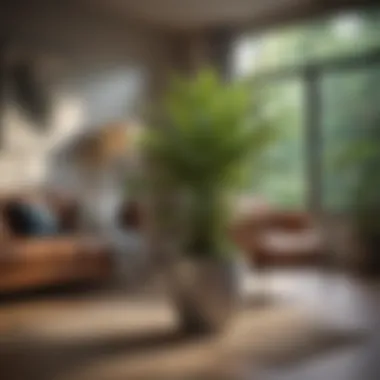
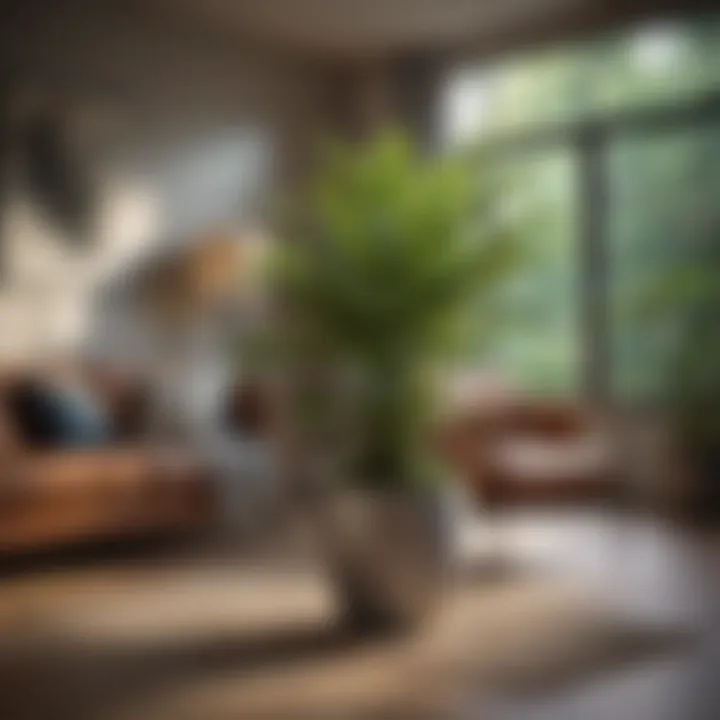
Material considerations
When it comes to selecting containers, the material is paramount. You’ve got quite a few options like plastic, terracotta, ceramic, and metal. Each material comes with its own set of characteristics. Plastic, for instance, is lightweight and often more cost-effective, making it a great choice for those who move around a lot. On the other hand, terracotta offers a natural aesthetic with excellent breathability, which helps prevent root rot but can dry out quickly in warmer conditions.
Key takeaway: Think about durability as well as the look you want for your space. While some materials like plastic might be easy on the wallet, terracotta adds a rustic charm. Every material carries its load—if you’re seeking something stylish, ceramic might be your best bet, but remember, it’s heavier and more prone to breakage.
Size and drainage
The size of your container needs careful consideration too. A pot that’s too small can restrict growth and lead to poor drainage, causing waterlogging which can harm your plants. Ideally, choose containers that not only fit the plants they house but also leave room for growth.
Don’t forget about drainage holes. Many plants need soil that can drain easily. Those little holes at the bottom allow excess water to escape—essential for keeping your plants healthy.
Why it matters: You want to ensure that your plants have room to thrive without drowning in a flood of water. The right size and drainage setup will lead your plants to flourish rather than flounder in a risky setting.
Aesthetic appeal
Finding the right balance of function and style is vital for apartment gardening. Your containers should not only serve the plant’s needs but also enhance your living space aesthetically. Having a variety of planters, from quirky and colorful to sleek and modern, can transform a plain corner into a lively focal point.
Unique feature: Experimenting with different shapes and colors is an ideal way to reflect your personality and style in your home. However, be careful not to overcrowd your plants. Less can often be more when designing with containers—that empty space helps create a sense of balance and beauty.
Soil and Fertilizer Basics
Once you've got your containers squared away, the next step is soil and fertilizers. Understanding what goes into your plants signifies a deeper connection to their care. The right soil mix can be the difference between an impressive garden display and a failed attempt.
Types of potting mix
When selecting potting mix, consider the types tailored to specific plant needs. For instance, cacti and succulents require a fast-draining mix to prevent rot, while others might thrive in a moisture-retentive blend. Common types of potting mixes include those enriched with coco coir, peat moss, or perlite.
Key characteristic: A well-balanced potting mix provides not only proper drainage but mimic natural conditions in which plants thrive. This helps you avoid over or under-watering your leafy friends.
Organic versus inorganic fertilizers
Fertilizers come in two major flavors: organic and inorganic. Organic fertilizers are derived from natural sources, making them a good choice if you’re aiming for a more sustainable approach. They release nutrients slowly, leading to healthy soil. Inorganic fertilizers, while often more concentrated, can give plants a quick boost but may disrupt soil health over time.
Why choose one over the other? Organic methods are generally gentler on plants and soil, but inorganic could be beneficial for a quick turnaround—both have their merits depending on your gardening style.
Water retention techniques
Water retention techniques can drastically change how your apartment garden survives between watering sessions. Clay pots, for example, naturally absorb moisture, while materials that are synthetically designed for water retention can keep your soil moist.
Unique feature: Strategies like incorporating water-retaining crystals or using wicking systems can significantly ease maintenance. They also ensure your plants receive the consistent moisture that is often key to their success in a constrained space.
"Utilizing these fundamentals can turn a humble apartment garden into a vibrant sanctuary."
In short, understanding container gardening essentials is more than just a trend; it’s about creating a sustainable and thriving green space in your home. It’s a hands-on journey that connects you with nature, enhances your environment, and can even provide homegrown herbs and vegetables.
Innovative Gardening Techniques
As urban living continues to rise, apartment dwellers find themselves seeking ways to integrate nature into their compact spaces. Innovative gardening techniques can not only add a touch of green to a small apartment but also address common challenges related to limited space, light, and resources. These methods encourage creativity, allowing urban gardeners to maximize every inch they have while fostering a healthier environment.
One of the most notable advantages of adopting innovative gardening techniques is sustainability. Such practices often utilize minimal resources and can dramatically enhance air quality, making indoor gardening a key player in creating healthier living spaces. Additionally, these techniques may appeal to those who appreciate technology; modern solutions can streamline plant care, making it more accessible for busy lifestyles.
This section dives into two transformative methods: hydroponics and aquaponics, along with integrating smart technology for plant care. Each technique offers unique benefits and requires different levels of commitment and understanding.
Hydroponics and Aquaponics
Hydroponics is a method of growing plants without using soil, relying instead on a nutrient-rich water solution. This technique allows plants to grow faster, as they can absorb nutrients more efficiently. It’s particularly advantageous in apartments where soil can be messy and space is limited.
Aquaponics combines hydroponics with aquaculture, the practice of raising fish. The fish produce waste that serves as nutrients for the plants. In return, the plants help purify the water for the fish. This symbiotic relationship exemplifies innovative gardening, proving efficient and sustainable.
Here are a few quick points about hydroponics and aquaponics:
- Space Efficient: Requires less space than traditional gardening, perfect for small apartments.
- Water Conservation: Uses significantly less water than conventional gardening.
- Faster Growth Rates: Plants grow quicker due to optimized nutrient absorption.
- Less Pest Problems: Soil-less gardening reduces the likelihood of soil-borne pests.
These systems can be set up in a variety of ways, from simple countertop setups with herbs to more complex systems that can accommodate larger plants. Both methods offer an exciting, advanced approach to greening your apartment.
Using Smart Technology for Plant Care
The integration of smart technology in gardening may sound futuristic, but it's swiftly becoming an essential part of modern apartment living. Smart gardening tools leverage technology to help you manage your plants effectively, even when you’re busy or away from home.
Consider these smart gardening innovations:
- Automated Watering Systems: Devices can water your plants on a schedule, ensuring they get the right amount of moisture without stressing over daily watering.
- Smart Soil Sensors: These sensors monitor soil moisture and nutrient levels, sending alerts to your phone when your plants need tending.
- App-Controlled Grow Lights: Ideal for apartments with limited natural light, these lights can be programmed to mimic sunlight conditions, fostering optimal growth.
Incorporating technology into your gardening routine not only simplifies plant care but also maximizes plant health and aesthetics. It’s particularly beneficial for those who travel often or maintain a busy schedule but still wish to enjoy the benefits of indoor gardening.
"With innovative techniques like hydroponics and cutting-edge smart technology, even the smallest apartment can host a thriving garden."
Creating a Miniature Garden
Creating a miniature garden offers a unique way to bring nature into cramped living spaces, turning an ordinary room into a lush, verdant oasis. These compact landscapes not only serve as a decorative element but also bring significant psychological benefits by connecting individuals with nature. They can spark creativity, offer a sense of accomplishment, and provide a tranquil little retreat from the hustle and bustle of daily life.
In apartments, where space is often at a premium, miniature gardens allow you to create your own green enclave without needing a sprawling backyard. Small-scale gardening is particularly advantageous for urban dwellers, as it opens up multiple avenues to experiment with design and plant choice while optimizing limited real estate.
Terrariums: A World Inside Glass
Terrariums are a delightful way to cultivate a hidden ecosystem in a glass container. Whether they are simple or elaborate, they present an opportunity to create a self-sustaining environment that can thrive with minimal intervention. To start, you'll need a glass container—this can be anything from a large vase to a repurposed fish tank. The transparency of the glass allows sunlight to reach the plants, while also showcasing the intricate details of your miniature garden.
When crafting your terrarium, consider the following layers:
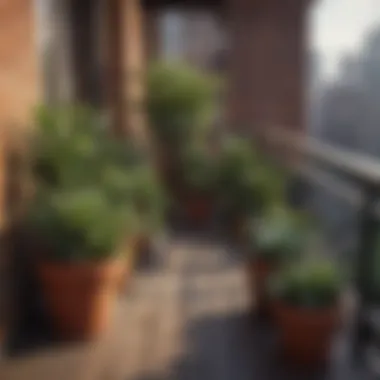

- Drainage Layer: Start with small rocks or pebbles to facilitate drainage and prevent root rot.
- Activated Charcoal: A thin layer of activated charcoal can help filter the air and keep the environment fresh.
- Soil Layer: Use potting soil suitable for the types of plants selected, ensuring it provides adequate nutrients.
- Plants: Choose plants that thrive in humidity, like ferns or mosses, which mimic forest conditions.
Arrange the plants aesthetically, leaving room for growth and allowing airflow. Remember, maintenance is relatively easy; misting plants occasionally might be all it takes to keep them vibrant.
"Terrariums are not just gardens; they are a way to create your own little world, contained and self-sufficient."
Fairy Gardens: Crafting Tiny Landscapes
Fairy gardens take miniature gardening to a whimsical new level, inviting imagination and storytelling into your home. These charming arrangements often include tiny figurines, houses, and pathways made from natural materials to create a magical atmosphere. When designing a fairy garden, consider the scale of each item to ensure that it fits within the context of the plants chosen.
Here’s what you can include in your fairy garden:
- Miniature Furniture: Look for small chairs, tables, and benches to furnish your tiny realm.
- Natural Elements: Use twigs, stones, and pebbles to create pathways or borders that add texture and interest.
- Plant Selection: Dwarf plants, succulents, and ground cover plants work well, as they maintain a small stature while contributing to the enchanting feel of the garden.
To make your fairy garden a delightful retreat, personalize it with themes, such as a woodland setting or a beach scene. Not only do fairy gardens offer an artistic outlet, but they also serve as engaging conversation starters, showcasing your creativity to friends and family.
Summing it up, miniature gardens bring together creativity, earthiness, and charm—all essential elements for enhancing apartment living. They not only brighten interiors but also provide a rewarding hobby that cultivates your connection with nature. Now, you have the tools and ideas to create your own little green sanctuary, no matter how small the space!
Incorporating Gardening into Decor
Incorporating gardening into decor is not just a trend; it’s a philosophy that transforms living spaces into sanctuaries. Many apartment dwellers often think small when it comes to decor, but greenery has a way of elevating even the tiniest of spaces. Plants bring life, color, and a sense of calm to interiors, making them a valuable addition. Beyond aesthetics, plants can improve air quality and promote mental well-being, making their presence multifaceted in purpose.
Plants as Decorative Elements
Choosing statement plants
When it comes to choosing statement plants, the key is selecting ones that capture attention. Statement plants like Fiddle Leaf Figs or Bird of Paradise often stand tall, creating a natural focal point in a room. These plants can completely change the vibe of a space, lending it an organic flair that sometimes feels missing in modern decor.
Choosing striking plants isn’t just about looks; these choices often reflect personal style. They have the ability to start conversations and serve as pieces of living art. However, it’s essential to consider the care requirements. While some statement plants might need consistent light and humidity, others like a Snake Plant can do just fine in low-light areas.
"Plants are the best decoration, they breathe life into our spaces, reminding us of nature's aesthetic."
Seasonal plant swaps
Seasonal plant swaps can keep your decor fresh and vibrant throughout the year while offering a way to engage with gardening creatively. The notion is straightforward: change out plants based on seasons, bringing bright blooms in the spring, lush greenery in summer, and warm hues during the fall and winter months. This not only brings variety, but also fosters a deeper connection to the changing seasons.
The unique advantage of seasonal swaps is that your space continually evolves, preventing stagnation in your home decor. Plus, this is a great chance to discover new plant varieties and cultivate your skills. However, one should be cautious and mindful of climate conditions; certain plants may thrive during particular seasons but not during others, making timing essential for successful swaps.
Designing Indoor Green Spaces
Creating focal points
Creating focal points in apartment gardens is like adding punctuation to a sentence. It draws the eye and establishes a flow within the space, making it feel whole and harmonious. A well-placed large plant or vertical garden can serve as a striking feature that anchors a room.
This approach encourages thoughtful design, making one consider how plants can harmonize with furniture and art. It doesn’t simply beautify the area but also contextualizes the plants within your lifestyle. The downside might be the challenge in maintenance; if not planned properly, a focal plant can require more attention than others, striking an imbalance in your overall gardening approach.
Balancing plant and decor aesthetics
Balancing plant and decor aesthetics is crucial for a cohesive living environment. It boils down to ensuring that plants don't just exist as accessories but reside in harmony with other decor elements. Factors include colors, shapes, and textures of both plants and furnishings.
A succulent cluster can complement minimalistic furniture beautifully, while vibrant flowering plants might provide contrast and richness against neutral backdrops. However, individuals should note the potential pitfall: an overload of plants may make a space feel cluttered rather than curated. The goal should be to create a harmonious dialogue between greenery and interior design.
Maintenance Tips for Apartment Gardens
Maintaining an apartment garden can feel like a delicate dance, especially when space is tight and the conditions aren't always ideal. Understanding key maintenance strategies is vital for achieving a thriving indoor or container garden. A good maintenance routine not only helps plants grow but also enhances the overall aesthetic and health of your living space. Without proper care, even the most carefully selected plants can wither away. Thus, having a reliable maintenance plan can lead to a flourishing green sanctuary, enriching the atmosphere of your apartment.
Watering Strategies for Limited Spaces
In limited spaces, watering might seem straightforward, but it requires a tailored approach. Overwatering, for instance, is a common pitfall among apartment gardeners, often resulting in root rot and other issues. Therefore, the first step lies in understanding your plants' specific watering needs.
- Assessing Moisture: One effective way is to check the top inch of soil. If it feels dry, it’s usually time to water. Note that different plants have varied humidity and moisture needs, which influences how often they need a drink.
- Using Proper Containers: Ensure your containers have drainage holes. This will allow excess water to escape, reducing the risk of over-saturation.
- Watering Techniques: Try using self-watering pots if you’re often away. These pots have a reservoir that allows plants to absorb water as needed, which is helpful for busy lifestyles.
- Incorporating a Schedule: Establish a watering schedule tailored to your plants. A simple calendar or app can help you keep track of who needs what and when.
Setting up these strategies can prevent frustrating setbacks and foster a lush environment. By implementing a careful watering regime, you provide your plants not just with water, but the chance to thrive.
Dealing with Pests and Diseases
Even in the most loving environments, pests and diseases can sneak in unexpectedly. Keeping a vigilant eye on your plants can save you a lot of trouble down the line. Here’s how to tackle this challenge effectively:
- Spotting the Invaders: Regularly inspect leaves and stems for signs of pests like aphids or spider mites. Early detection is key; catching these issues sooner rather than later can make a world of difference.
- Natural Remedies: Before reaching for pesticides, consider utilizing natural pest control methods. A mixture of soap and water can effectively combat many common pests without harming your plant. Spray this mixture on the affected areas and watch those pests flee.
- Promoting Healthy Plants: Strong plants are more resistant to disease and pests. Regularly pruning dead or yellowing leaves promotes airflow and keeps your plants looking their best.
- Quarantine New Additions: If you bring home a new plant, keep it separate from your existing collection for a week or two. This helps ensure it doesn’t introduce any unwanted guests into your established greenery.
Maintaining an apartment garden successfully hinges on these ongoing strategies. With consistent attention to watering and vigilant pest control, your tiny green space can flourish, providing not just aesthetics but also a serene escape from urban life.
Sustainable Gardening Practices
Sustainable gardening practices have become a critical consideration for those living in apartments. In the context of urbanity, where space is tight and resources can be limited, being mindful in gardening can yield a wealth of benefits. Not only does sustainable gardening contribute directly to environmental health, but it also fosters a sense of community and personal well-being. For apartment dwellers, it translates into a deeper connection with the natural world, even amidst concrete jungles.
Composting in Small Spaces
Composting, at its core, is a process of recycling organic waste into a nutrient-rich soil amendment. This can seem challenging in a small apartment, but with some clever modifications, it's very doable. Here’s how to engage in composting effectively:
- Choose the Right Method: For small spaces, consider a worm bin or a compact composting system. Worm bins, also known as vermicomposting, work wonderfully in apartments and can handle kitchen scraps like fruit peels and vegetable trimmings.
- Start Small: No need to dive into a massive composting project. Begin with any leftover food scraps from your meals. This reduces waste while you learn the ropes.
- Balance Greens and Browns: The key to effective composting lies in the balance. Browns (like cardboard and dry leaves) provide carbon while greens (like fruit peels and vegetable scraps) provide nitrogen. Finding a balance helps prevent odor issues.
- Monitor Moisture and Aeration: Keeping the compost damp but not soaking wet is essential. Turn the contents occasionally to allow for aeration, which encourages a healthy decomposition process.
By building a composting routine, apartment gardeners can divert waste from landfills, minimize their carbon footprint, and produce nutrient-rich material for plants, offering a perfect synergy between sustainability and urban gardening.
Eco-Friendly Pest Control Methods
Dealing with pests can be a thorn in the side for any gardener, but there are numerous environmentally friendly strategies to keep those pesky bugs at bay without resorting to harsh chemicals. For apartment dwellers, these methods not only protect plants but also safeguard indoor air quality.
- Natural Repellents: Consider using natural solutions like neem oil or insecticidal soaps. These can efficiently control pest populations without harming beneficial insects.
- Diatomaceous Earth: This powder, made from fossilized algae, can deter crawling insects. Sprinkling a thin layer on the soil surface offers a protective barrier while remaining non-toxic to humans and pets.
- Physical Barriers: Utilize tools such as fine mesh barriers to keep insects out. Simple solutions like bug netting or even repurposed fabrics can serve as effective shields.
- Introduce Beneficial Insects: Attract ladybugs or lacewings, which are known for their appetite for aphids. These little allies can turn a pest problem into a procurable solution.
By adopting these eco-friendly pest control methods, apartment gardeners can maintain a thriving green space while respecting the boundaries of their urban habitat, ultimately weaving sustainability into the fabric of their everyday lives.
"Sustainable gardening is not just a technique; it’s a mindset that cultivates a future where both nature and urban lifestyles can flourish together."
With these sustainable practices, apartment dwellers can practice gardening that resonates with the principles of environmental stewardship, enhances their indoor spaces, and promotes a healthier lifestyle.







